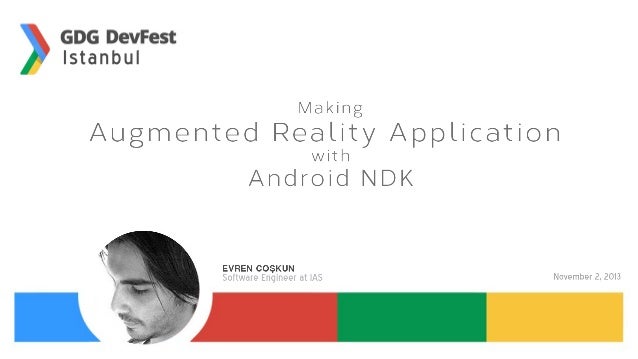
- #Android ndk tutorial how to#
- #Android ndk tutorial for android#
- #Android ndk tutorial android#
- #Android ndk tutorial code#
- #Android ndk tutorial free#
Cygdrive is the command needed by cygwin to navigate to the correct folder and the c indicates that your project is on the C drive of your computer. For example "cd /cygdrive/c/java_workspace/projectname/jni".
#Android ndk tutorial code#
So here is the way I compile the C/C++ Code and create the library: I do not really understand what they are doing in the instructions on the page I have just mentioned above. Now we are finished with the code and can compile it. In our case, we are just creating a string s and return it to the Java part of the program. But as you see in the code, you have to work with pointers when you want to work with values/objects received via the JNI or if you want to return results back. As long as you are creating objects within your C code and work on these objects, you can do it like you are used to. But you do not have to really care about them. Even if you do not need any attributes, you always have two parameters belonging to your method. Otherwise you will probably become an error. So it's better/necessary to avoid underscores within your class or method names. These parts of the name are connected with underscores and also all the dots (for example in the package name) become underscores. The methods are always named in a special way: You take the package name, followed by the class name and the actual method name. Your actual code has to be in the C file. You always have to have such a file that looks similar to this one when you are using the NDK. This is not really the code you want to ride but more like an interface between the C and the Java code. Open the file Android.mk and in the folder jni. To tell your application where to look for the native methods, you have to include the library you will create later from your C code: It is very important to use the key word native. The method stringFromJNI() must be declared inside the Java part of the program. We want to receive the content of this TextView from a JNI method:

As we just want to display text, we have have to create a TextView: So we have to say inside this method how the app shall look like in the beginning. This method is called when the application is started.
#Android ndk tutorial android#
An Android app does not have a Main function, but an onCreate method. I guess after reading the NDK documentation you are more or less familiar with the structure of this program.
#Android ndk tutorial how to#
I do not really like the instructions you find on this page and as I was struggling with them, I try to give you another explanation how to get this application running.Ĭreate a new Android project just like explained on the mentioned page above and open the project hello-jni from the sample folder. Read the chapter Exploring the hello-jni Sample. On this page you also find all the tutorials you have just downloaded together with the NDK. Afterwards, read carefully through the NDK documentation and understand what the intent of the NDK is. I think the Wikipedia article is a good way to start understanding the JNI.
#Android ndk tutorial for android#
JNI cannot just be used for Android programming, but also for simple Java coding. The NDK uses the JNI (Java Native Interface). I assume you have already installed the NDK. Integrating native code written in C or C++ is more complicated, but once you have understood how it works, you will get used to it very quick. Now you know the basics of coding for an Android phone by just using Java.

To be honest, this tutorial is much more complicated than the other one and I haven't really understood everything when I read it, but it definitely helps you to understand, how an Android project works and how you can connect different parts of your program with each other or even with other applications. xml files is explained in the second part of the article mentioned above.Īnother tutorial that helped me a lot is the Notepad Tutorial. That helps to change the text afterwards and to convert your application to other languages. xml files for entering text that shall be displayed instead of actually writing it directly into your code.

Remember for your following projects, that it is always better to use. This page also shows you again how to create a virtual device. The page shows you from scratch how to create a new Android project. The Android Developers page offers some tutorials that helps you to get started.
#Android ndk tutorial free#
This page is the second chapter of the article Coding for Android on Windows.įeel free to write comments or add content. Coding for Android on Windows - First projects


 0 kommentar(er)
0 kommentar(er)
